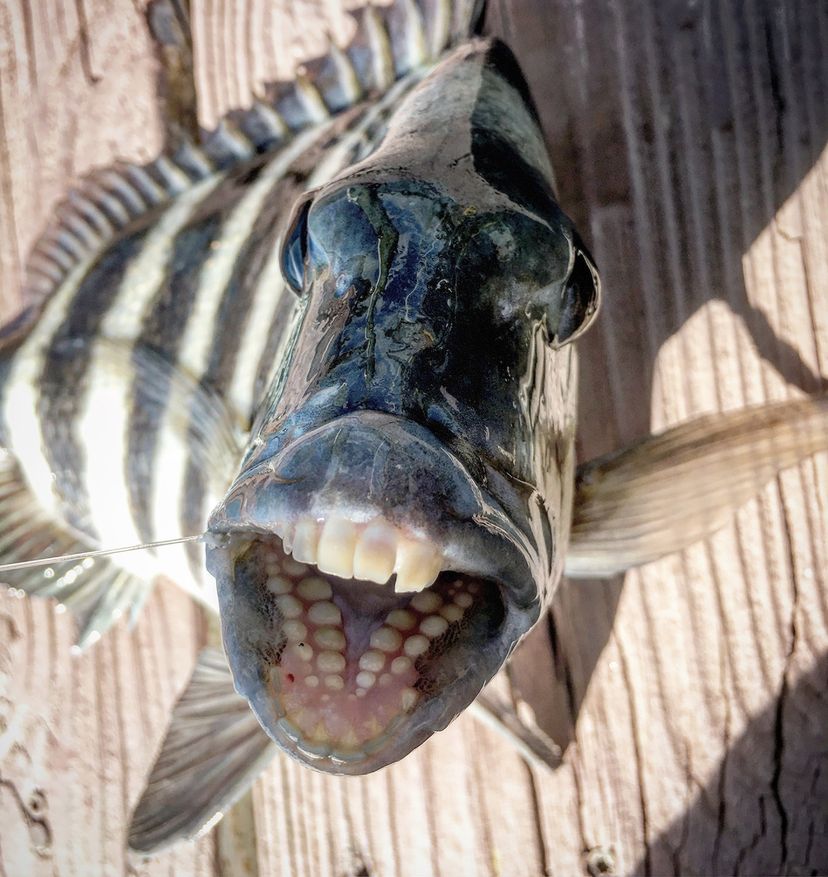The sheepshead fish mainly lives in the coastal waters of the western Atlantic Ocean, from Nova Scotia down to Brazil, with a presence in the Gulf of Mexico and along the southeastern coast of the United States.
For the most part, they go south during winter months to keep warm and head north in early spring for spawning season. Within these places, they are commonly found around piers, jetties and rocky coasts, as well as in mangrove roots and estuaries where brackish waters prevail.
These versatile fish adapt remarkably to different salinity levels, which means they thrive in both bodies of saltwater and freshwater habitats like tidal creeks. A key to their survival is the abundance of hard-shelled prey found in these areas, which suits their unique dental structure perfectly.
Sheepshead fish utilize structures like oyster beds, rock pilings, reefs and even human-made environments to support their feeding habits, blending into their surroundings with their distinctive stripes.
These habitats not only provide ample food sources but also protection from predators, making them ideal living spaces for sheepshead.

